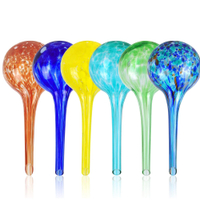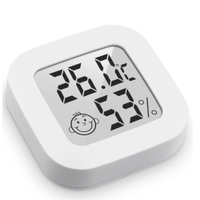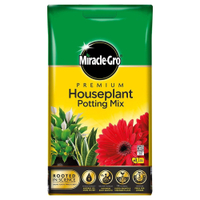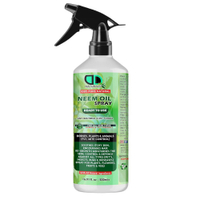How to care for a fiddle leaf fig: a step-by-step guide from our plant experts
From mastering the watering routine to perfecting soil type, there's a reason fiddle leaf figs are one of the biggest challenges in the plant world
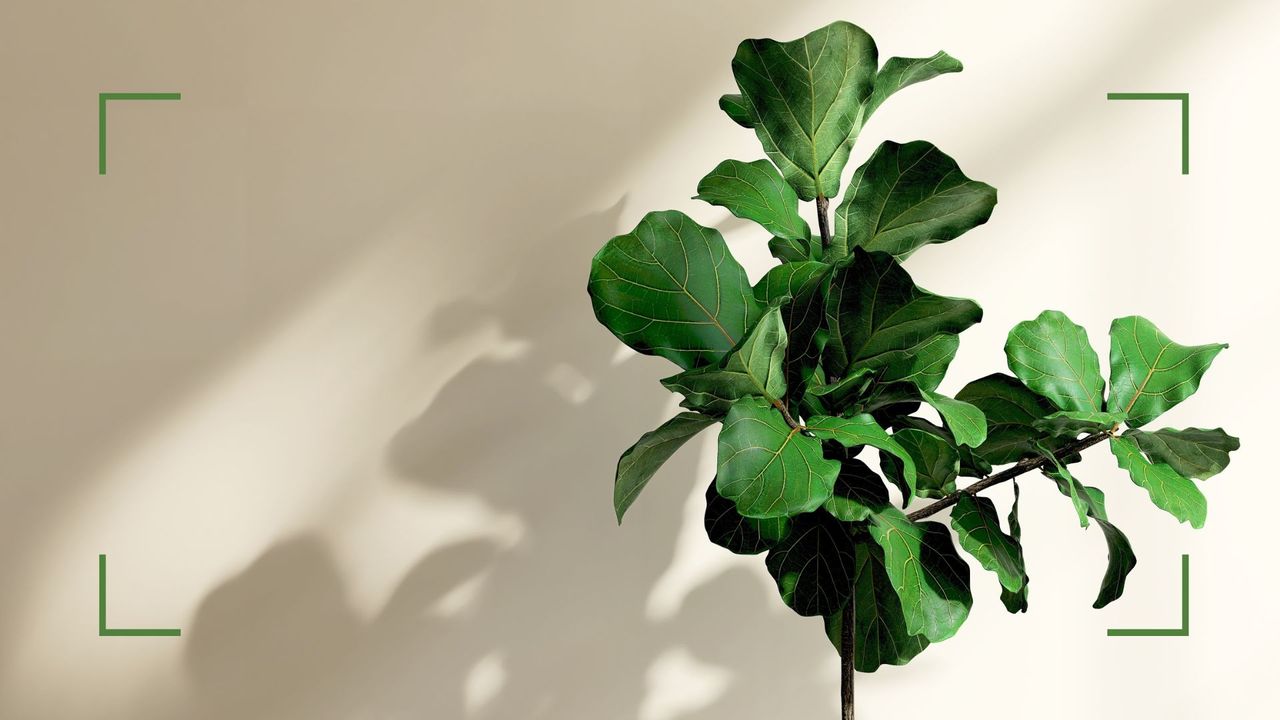

No matter how great your houseplant experience is, looking after a fiddle leaf fig can be an undeniable challenge. That's why we put it to the experts to create a crash course guide on keeping this stubborn plant happy and healthy.
When it comes to caring for indoor plants there are endless things to remember for each species, from watering to repotting. So tasking yourself with a demanding tropical plant like the fiddle leaf fig can have you questioning your care routine.
Fear not, learning a care guide from the experts is the best way to ensure your plant stays healthy and continues to thrive in your home.
How to care for a fiddle leaf fig: an expert guide
As one of the hardest plants to keep alive, caring for the fiddle leaf fig doesn't come easy. It has very specific needs and wants, even knowing how to propagate the species is an obstacle.
That's why it's important to know the ins and outs of keeping the plant alive and well before you buy one from one of the best online plant retailers.
1. Balance your watering routine
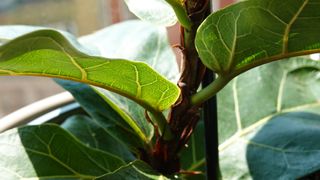
Knowing how often to water your indoor plant is one of the first things you should learn upon owning it. An incorrect amount of watering can cause many plant problems from wilting to mould growing on the topsoil.
"Fiddle leaf figs can suffer if they are underwatered or overwatered, but it can be better to fall on the side of underwatering," says Graham Smith MCIHort, horticulture expert at LBS Horticulture.
Sign up for the woman&home newsletter
Sign up to our free daily email for the latest royal and entertainment news, interesting opinion, expert advice on styling and beauty trends, and no-nonsense guides to the health and wellness questions you want answered.
He adds, "In spring and summer, check if the plant needs watering by inserting your finger into its compost, and only water if the top few centimetres of compost feel dry. Watering can be reduced in winter."
AMFUN Plant Watering Globes Stakes, £16.99 for 6 at Amazon
These attractive hand-blown colourful glass watering devices are an easy way to employ a self-watering feeding system for your indoor potted plants. Perfect to prevent overwatering your fiddle leaf fig plant.

Graham has extensive knowledge in the horticultural and gardening industries, and prides himself on using this to help gardeners of all skills create their perfect outdoor space.
2. Find an appropriate spot for it to live
The placement of your plant is important for several reasons, including the amount of sunlight it gets and of course, the temperature of its surroundings. Placing a plant in the wrong spot might have you wondering why your peace lily leaves are turning yellow.
Petar Ivanov, gardening expert at Fantastic Gardeners explains the best spot for your fiddle leaf fig: "Fiddle leaf figs should be grown in a spot that gets bright but indirect sunlight, away from any draughts. If your fiddle leaf fig gets too much sunlight, it can develop brown patches on its leaves or they can start to yellow."
He does however point out that a shadier location can come with its own risks too. "On the other hand, if it’s positioned in a shadier location, the plant will simply grow slowly," he adds.
Temperature-wise, Petar recommends placing your plant in a room where the temperature won't drop below 15 degrees, even in the winter.
Mini Digital Indoor Thermometer, £4.99 at Amazon
This affordable Indoor thermometer can accurately monitor humidity levels with ease and is ideal for keeping those tropic plants happy.

Peter has been a gardening and plant expert at Fantastic Gardeners for over 8 years, he is now one of the company's top-performing experts and manages over 6 teams of gardeners. He works on creating stunning landscapes and prioritises sustainability in his gardening methods.
3. Remember to mist the plant regularly
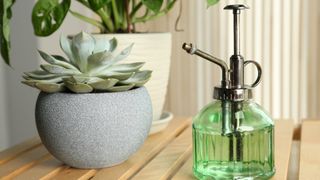
Whilst you might not already have misting in your houseplant care routine, even some of the easiest plants to keep alive will benefit from regular misting. Fiddle leaf figs are particularly fond of misting as they're a tropical plant and therefore need to be in a humid environment.
"Mist your fiddle leaf fig regularly because it’s a tropical plant that needs humidity and it’ll absorb the moisture through its leaves. Occasionally, clean the leaves with a damp cloth to remove any dust," explains Petar.
Cleaning your plant leaves will allow water particles and light to get to the leaf surface, providing the fiddle leaf fig with those all-important nutrients.
4. Establish a feeding schedule
The amount of times you fertilise your plants depends on the species and the time of year you're doing so. Graham says, "Once a month during spring through to the end of summer, feed the plant with a liquid fertiliser." Through the winter this will need to be done less.
You can also use a sustainable houseplant hack and create your own organic fertiliser but just make sure the nutrients are suited to your fiddle leaf fig.
5. Master repotting your plant
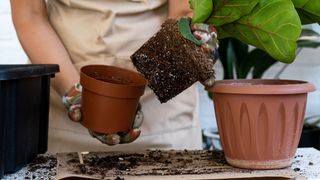
Learning both how to repot a plant and when you should repot a plant is important to ensuring your plant sticks around for a long time. Ignoring the signs that your fiddle leaf fig has outgrown its pot could lead to it wilting or even dying.
"It is best to repot your fiddle-leaf fig in spring, and the plant should only need to be repotted every three years into a slightly bigger pot. You can check if your plant is pot-bound by looking at the bottom of the pot to see if the roots are beginning to grow out of the drainage holes," explains Graham.
Even if you don't believe your plant is pot-bound, he still advises you to repot it and change its compost every few years.
Graham does however go on to say, "Fiddle-leaf figs can be kept slightly pot bound to limit their growth, but if the pot is too small or the compost dries out, the plant can topple over."
To avoid this he recommends using a pot that is large enough to balance the plant to stop it from falling and always use peat-free, well-draining compost.
Miracle-Gro Premium Houseplant Potting Mix: £9.99 at Amazon
This houseplant soil is perfect for supplying your fiddle leaf fig with all the right nutrients. A houseplant compost like this one gives your plant enough food for three months and it's built to encourage root growth and balance air in the soil.
6. Look out for common pests
One of the most common houseplant mistakes you can make is forgetting to guard your plant against pests. These pests are usually microscopic but the damage they can cause is anything but.
Graham explains that there are four main pests that you may find damaging your fiddle leaf fig. He says, "If your fiddle-leaf fig has fine webbing on the leaves, as well as mites and eggs on the undersides of leaves, it's likely to be red spider mites.
They thrive in dry environments, so you should improve the humidity around your fiddle-leaf fig by placing its pot atop a tray of pebbles. The tray should be filled with water until it reaches just below the top of the pebbles, or you can alternatively mist the plant more often."
Alternatively, you could also find white waxy mealybugs on the underside of your plant's leaves, thrips which can also be killed by added moisture and even scale insects. All of these pests can be prevented with regular use of a natural insecticide like neem oil spray.
DD Organic Neem Oil: £12.49 at Amazon
If you want to ensure no pests are reaping the rewards of your green thumb applying this neem oil to the soil and stems is a great deterrent.
FAQs
When and how long is winter dormancy for fiddle-leaf fig?
Surprisingly there are quite a few differences in winter houseplant care compared to summer or spring. Not only do the plant's environments change with the seasons but their behaviours do too.
Petar says, "Usually, fiddle leaf figs can be dormant during the colder winter months. However, when they’re kept indoors, they’re known to skip this winter dormancy or at most just slow down their growth."
However, he does point out that most people say their indoor fiddle leaf figs experience a growth spurt even during winter if they're kept in the right conditions. Whilst you'll want to increase misting and ensure the temperature doesn't drop too much, you might notice you have to water the plant a little less.
How do I know my fiddle leaf fig is happy?
The best thing about plants is that they're incredibly reactive, whether that's your monstera's leaves turning yellow or your peace lily's tips becoming brown. They often tell you whether they're healthy or not.
Petar explains, "Usually, the best way to tell that a fiddle-leaf fig is happy is by looking at the newly growing leaves. If the new leaves are larger than the old ones, that's a sign that your plant is growing happy and healthy because your plant is healthy enough to direct its resources towards new growth."
If the new leaves are instead smaller than the older ones then he says it's likely a sign that your plant doesn't have the right or enough nutrients to grow well.
How do you propagate a fiddle-leaf fig?
If you're ready to expand your collection of the best indoor plants propagation (taking plant cuttings) is an easy and sustainable way to do it. However as mentioned previously, it's only an easy process when you know the steps.
"Fiddle-leaf fig is best propagated through stem cuttings, but this can take several months and may not always be successful," explains Graham. "To increase the chances of success, take a cutting in spring or summer when the plant is actively growing."
When the time is right you'll want to start by cutting a single leaf node with a cleaned pair of secateurs. Then plant the node into a damp, peat-free houseplant soil with the leaf sticking out. You can then put a plastic bag over the cutting to keep it warm and moist, that way it should root faster. Once you can see a second leaf growing it's time to remove the bag and repot the cutting into a small pot.
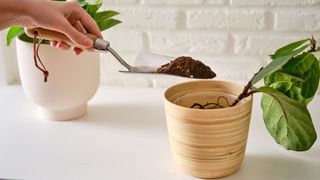
Fiddle leaf figs may not be the fastest growing houseplant but thanks to their difficult nature they are one of the most rewarding. So when you finally master caring for one, you can proudly say you're an accomplished plant parent.

Emily joined woman&home as a staff writer after finishing her MA in Magazine Journalism from City University in 2023. After writing various health and news content, she now specialises in lifestyle, covering unique cleaning hacks, gardening how-tos, and everything to help your houseplants thrive.
-
 Midsomer Murders Wild Harvest spoiler: Who was the killer and why did they commit such grisly crimes?
Midsomer Murders Wild Harvest spoiler: Who was the killer and why did they commit such grisly crimes?I’ve been a huge Midsomer Murders fan for so many years I’ve lost count and Wild Harvest is an episode that still stands out to me.
By Emma Shacklock Published
-
 Let’s celebrate what unites us – it could help bring us together
Let’s celebrate what unites us – it could help bring us togetherWe’ll be a happier society if we do, argues coach, consultant and podcast host Elizabeth Oldfield
By Elizabeth Oldfield Published
-
 Interior Design Trends 2025 – 7 key looks for spring, to give your decor a seasonal refresh
Interior Design Trends 2025 – 7 key looks for spring, to give your decor a seasonal refreshFrom elegant neutrals to uplifting brights, welcome the new season with our round-up of the key trends for your home
By Tamara Kelly Published
-
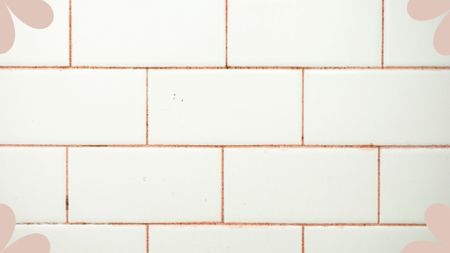 What is pink mould and how can you get rid of it safely? Experts share advice
What is pink mould and how can you get rid of it safely? Experts share adviceWhile you may not have even heard of pink mould, it's relatively common and important to know how to tackle it quickly
By Emily Smith Published
-
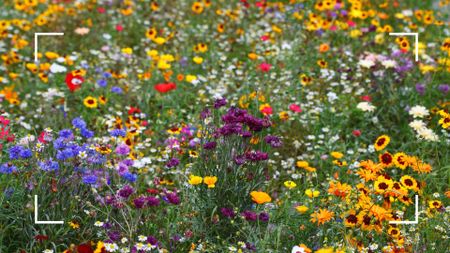 'Meadowscaping' is the charming low-effort, low-cost garden trend that attracts wildlife in abundance
'Meadowscaping' is the charming low-effort, low-cost garden trend that attracts wildlife in abundanceTurn your garden into an endearing low-maintenance meadow with these expert tips and tricks
By Emily Smith Published
-
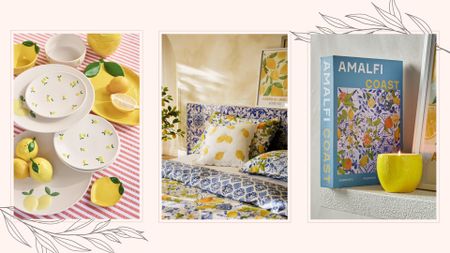 Welcome Italy into your home with the Amalfi decor trend – think lemons, ceramic patterns and bold colours
Welcome Italy into your home with the Amalfi decor trend – think lemons, ceramic patterns and bold coloursDreaming of an Italian-style summer? The new Amalfi interiors trend will provide all the dreamy Mediterranean vibes you need
By Emily Smith Published
-
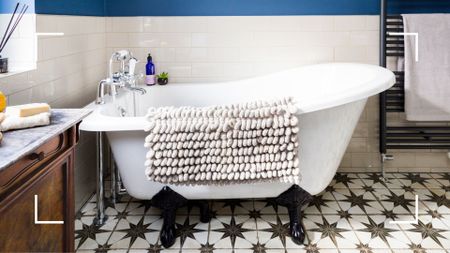 How often should you wash your bath mat? Cleaning experts share their advice
How often should you wash your bath mat? Cleaning experts share their adviceAre you cleaning your bath mat frequently enough? You might be surprised by the recommended regularity
By Emily Smith Published
-
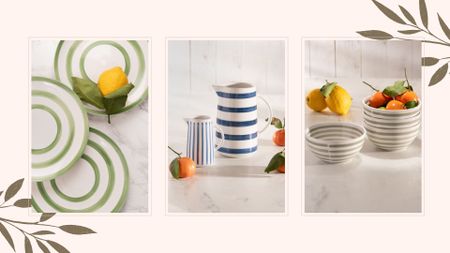 Mary Berry’s new Mediterranean-inspired kitchenware is a masterclass in timeless tablescaping
Mary Berry’s new Mediterranean-inspired kitchenware is a masterclass in timeless tablescapingWhat better way to celebrate Mary Berry's 90th birthday than serving her new tableware collection
By Emily Smith Published
-
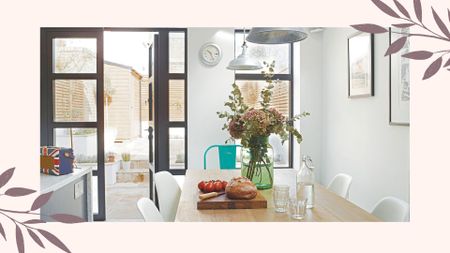 Kelly Hoppen shares her interior expertise to refresh homes accordingly now it's spring
Kelly Hoppen shares her interior expertise to refresh homes accordingly now it's springIt is time to say goodbye to the winter blankets and welcome the new season into your home
By Emily Smith Published
-
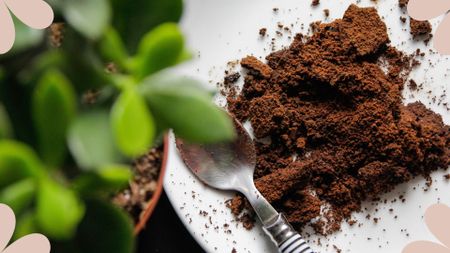 Are coffee grounds good for houseplants? Here's what horticulture experts say
Are coffee grounds good for houseplants? Here's what horticulture experts sayCould your morning caffeinated pick-me-up be as beneficial to your beloved indoor plants as it is in the garden?
By Emily Smith Published
